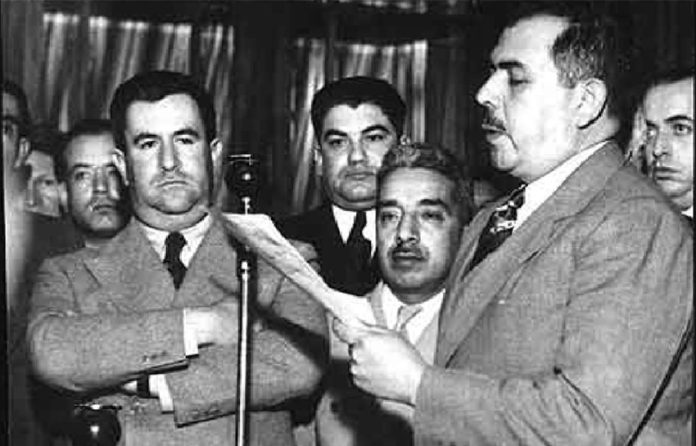President López Obrador will officially announce on Thursday the discovery of a large oil and gas field in Tabasco but there is no certainty that the deposit will be commercially viable.
According to government officials consulted by the newspaper Milenio, the deposit to be announced is the Dzimpona onshore field, located in Comalcalco not far from the site of the Dos Bocas refinery, which is currently under construction on the Gulf of Mexico coast.
The government believes the field has the initial potential to yield 600 million barrels of oil equivalent (boe).
López Obrador will announce the field during an event to celebrate the 83rd anniversary of the expropriation of the Mexican oil industry. Former president Lázaro Cárdenas nationalized the sector on March 18, 1938.
López Obrador said earlier this month that there has been a lot of progress in terms of oil exploration and that the government has been lucky. Pemex CEO Octavio Romero said Sunday that the new discovery is “a large field surrounded by smaller ones that could together hold prospective resources comparable to those found in Ixachi and Quesqui.”
Located in Veracrz, Ixachi is an onshore field discovered in 2019 with an estimated 2 billion boe of recoverable resources, mainly gas, Romero said. The Quesqui field, discovered in Tabasco in 2020, holds almost 1 billion boe, he said.
Marco Cota, CEO of Talanza Energy Consulting, warned that it is too soon to call the latest discovery a success. He noted that presidents have traditionally made big announcements about oil discoveries on March 18, asserting that they tend to be mere political marketing, especially during election years, as is the case this year.
Cota said that the government can only truly talk about success with respect to the discovery once it has been confirmed as commercially viable. Over the years, Pemex has identified dozens of potential fields that it has been unable to develop, he said.
“At the end of the day, Mexico has no shortage of reserves, it is the environment for investments in the country that is deteriorating,” Cota said, referring to the government’s decision to cancel new oil and gas auctions – made possible by the previous government’s energy reform – among other moves to give Pemex more control of the sector.
Energy analyst Ramsés Pech said that even if the Dzimpona field is found to be commercially viable it will not help Pemex to boost crude production anytime soon. Noting that the field is still in an exploratory phase, he said that production would not likely begin until the end of López Obrador’s 2018-2024 term or the start of the next federal administration.
Gonzalo Monroy, CEO of the energy consultancy firm GMEC, said the recent discovery of onshore fields is “not a game changer in any way.”
![]()
He said that a lot is already known about onshore fields in Mexico’s Gulf coast area as a result of lessons learnt at Ixachi and Quesqui. The wells at both fields are high temperature and high pressure, Monroy said, explaining that those factors translate into higher costs.
At current prices, gas projects don’t help to relieve Pemex’s main problems such as excessive production chain costs, he said.
Pemex has more than US $100 billion in debt and has not been able to increase crude production significantly despite the government’s efforts to stabilize operations by injecting about $17 billion into the company over the past two years.
It reported a loss of almost 481 billion pesos (US $23.5 billion) in 2020 as demand for oil slumped due to the coronavirus pandemic and associated economic restrictions.
Another problem for Pemex despite the discoveries in recent years is dwindling reserves. Consistent underinvestment in exploration has resulted in proven and probable reserves dropping to less than 16 billion boe in 2020 from from almost 45 billion boe in 2001, according to National Hydrocarbon Commission data.
The government’s decision to build a US $8-billion refinery on the Tabasco coast has been criticized on the grounds that it diverts resources from Pemex’s more profitable exploration business.
But López Obrador is determined to reduce Mexico’s dependence on imported fuels, pledging last year that the country will be self-sufficient in gasoline by 2023.
His announcement today – despite doubts about its commercial viability – is likely to be used as evidence for Mexico’s capacity to reach that goal.
It also gives a boost to the president’s nationalistic energy agenda as he seeks to “rescue” Pemex and the government-owned Federal Electricity Commission by bolstering their role in the Mexican energy sector at the expense of foreign and private companies that have invested billions of dollars here since the state monopoly was ended by the 2014 reform.
Source: Milenio (sp), S & P Global (en)
